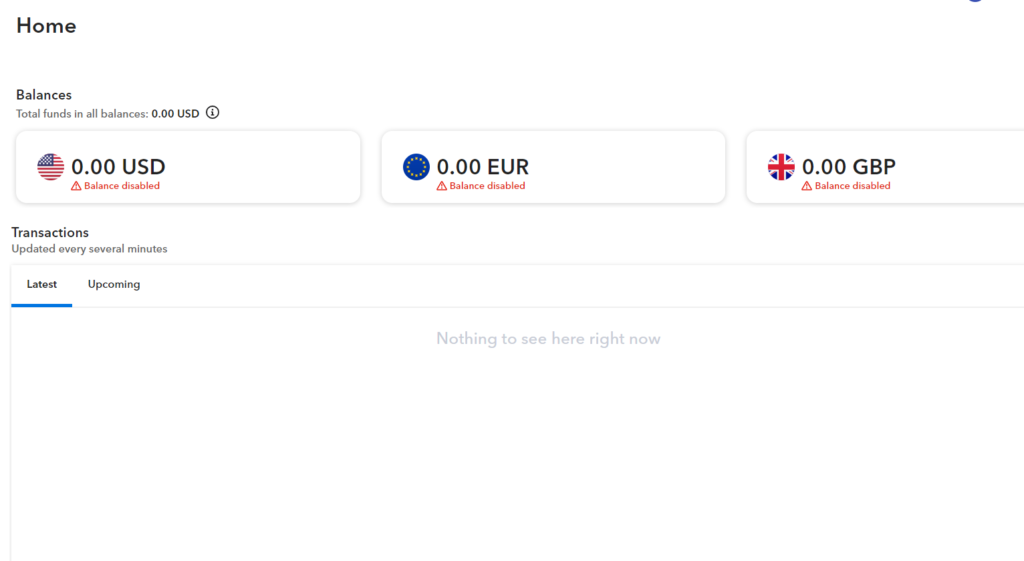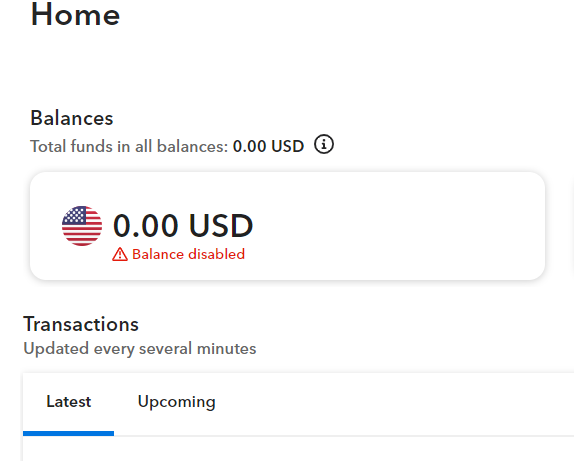So, you’ve logged into your Payoneer account, only to find that your balance is disabled. It’s confusing, frustrating, and downright nerve-wracking, especially if you were relying on that money. Don’t worry, you’re not alone, and it’s not the end of the world! Let’s break down why this happens, what you can do about it, and how to avoid it in the future.
What Does “Balance Disabled” Mean on Payoneer?
First things first—what exactly does it mean when Payoneer disables your balance? Simply put, it means that you temporarily can’t access your funds. This might prevent you from making payments, withdrawing money, or transferring funds to your bank account. While it can feel alarming, there’s usually a good reason behind this, and it’s often a solvable problem.
Why Payoneer Disables Balances: Common Causes
Payoneer takes security very seriously, which is why your balance may get disabled if something triggers a security measure. Here are some of the most common reasons:
1. Suspicious Activity or Fraud Alerts
If Payoneer detects something unusual with your account, like transactions that don’t align with your regular pattern, they might flag it for investigation. This could be as simple as trying to log in from a new location, or as serious as potential fraud or a hacked account.
2. KYC Verification Issues (Know Your Customer)
Payoneer, like most financial institutions, is required by law to follow KYC regulations. This means they need to verify your identity. If you haven’t completed all the necessary verification steps (like submitting documents to prove your identity or address), your balance could be disabled until you provide the required information.
3. Compliance With Regulatory Requirements
Payoneer operates in many countries and must comply with various regional regulations. If something changes with the legal requirements in your country, or there’s a mismatch between your account information and regulatory data, they might temporarily disable your balance.
4. Account Inactivity
If you haven’t used your Payoneer account for a while, the system may automatically disable your balance to protect your funds from unauthorized access.
5. Security Updates or Breaches
In rare cases, Payoneer may disable accounts temporarily during security updates or if there’s been a breach affecting multiple accounts. They do this to secure your funds while they resolve any technical issues.

What to Do When Your Payoneer Balance is Disabled
Alright, so your balance is disabled. What’s next? Here’s a step-by-step guide on what to do when faced with this situation.
1. Check Your Email
Whenever Payoneer disables an account or balance, they usually send an email explaining the reason. This is your first port of call. Look for any specific instructions they’ve given you.
- Check your inbox and spam folder. Sometimes these emails get filtered out, so make sure you’ve thoroughly searched your inbox.
- Follow the instructions. If the email explains why your balance is disabled, follow the steps Payoneer has outlined to resolve the issue.
2. Log Into Your Payoneer Account
Once you’ve checked your email, log into your Payoneer account to see if there are any alerts or notifications. Often, there will be a prompt at the top of your dashboard explaining what’s going on and what you need to do.
- Complete any pending tasks. Sometimes Payoneer will ask you to verify your identity, upload documents, or update your account information before re-enabling your balance.
- Double-check your verification status. If you haven’t completed KYC verification, this might be the cause of your issue. Navigate to the “Settings” or “Verification” section to see if anything is incomplete.
3. Contact Payoneer Customer Support
If there’s no clear reason why your balance is disabled, or you’re stuck, it’s time to get in touch with Payoneer’s customer support.
- Live Chat: Payoneer offers live chat support for quick responses. You can find this in the “Help” section of your account.
- Email: If chat isn’t available, you can also email them directly. Make sure to include your account details and any relevant information.
- Phone: In some countries, Payoneer provides phone support, so if you’re in urgent need, this can be a faster option.
Pro Tip: Be patient. Payoneer’s support team is usually quite responsive, but depending on the complexity of your issue, it might take a few days to fully resolve.
4. Submit Any Required Documents
If your balance was disabled due to missing KYC documents, Payoneer will request specific documentation, like:
- A government-issued ID (passport, driver’s license, national ID)
- Proof of address (utility bill, bank statement, lease agreement)
- Business documentation (if you’re using Payoneer for a business account)
Make sure to provide clear, legible copies of any documents requested. Double-check that your name and address match the information you’ve registered with Payoneer.
5. Wait for Payoneer to Re-enable Your Balance
Once you’ve submitted the required documents or resolved any issues, the final step is waiting for Payoneer to review and re-enable your balance. This can take anywhere from a few hours to a few days, depending on the complexity of the case.
How to Prevent Your Payoneer Balance From Being Disabled in the Future
While some issues are unavoidable, there are a few things you can do to minimize the risk of your Payoneer balance getting disabled again.
1. Keep Your Account Info Up to Date
Make sure that your name, address, and other personal details are always accurate and current. If you move or change phone numbers, update your Payoneer account immediately.
2. Regularly Check Your Emails for Important Updates
Payoneer often sends notifications about account security, verification requirements, or policy updates. Keeping an eye on these emails can help you stay ahead of any potential issues.
3. Complete KYC Verification Early
As soon as you sign up for Payoneer, make it a priority to complete the KYC process. This involves submitting proof of your identity and address, and sometimes even additional business documentation if applicable. Completing this early can prevent future headaches.
4. Avoid Suspicious Activity
Make sure you’re using Payoneer for legitimate purposes. Large, unusual transactions can raise red flags, so avoid activities that could be perceived as risky or fraudulent. If you’re using Payoneer for business, be transparent about your operations.
5. Use Your Account Regularly
An inactive account might trigger security measures, so try to use your Payoneer account regularly. Even if it’s just for small transactions, staying active reduces the chances of your account being flagged for inactivity.
When Should You Be Concerned?
While a disabled balance can usually be resolved quickly, there are some situations where you should be more cautious:
- No Communication from Payoneer: If you don’t receive an email or message explaining why your balance was disabled, and support isn’t responsive, this could be a red flag.
- Repeated Disabling: If your balance keeps getting disabled even after resolving previous issues, there might be a deeper problem with your account or how you’re using it.
In these cases, it’s best to escalate your concerns with Payoneer or consider consulting a legal or financial advisor, especially if you rely heavily on Payoneer for business transactions.
Final Thoughts: Don’t Panic, Just Act
It’s natural to feel stressed when your Payoneer balance gets disabled, but most of the time, it’s a temporary issue that can be resolved by following a few simple steps. Whether it’s verifying your account, submitting documents, or addressing unusual account activity, Payoneer’s systems are in place to protect you and your funds.
The key is to stay calm, follow their instructions, and reach out to customer support if needed. With a little patience and persistence, you’ll be back to business as usual in no time.
Got any questions or stories about Payoneer balance issues? Share them in the comments below!

